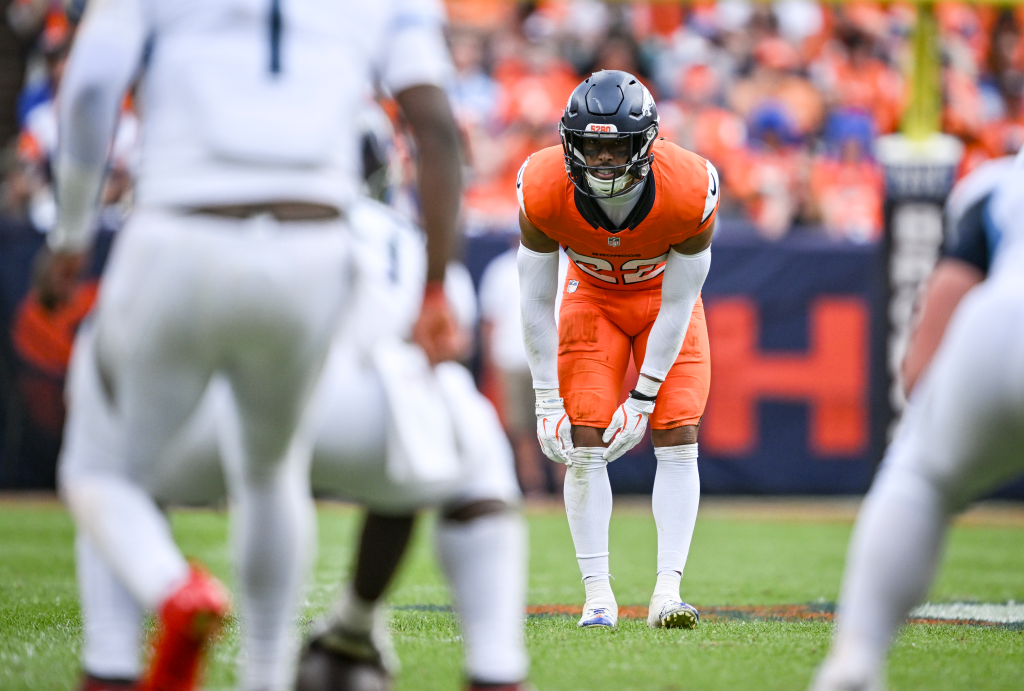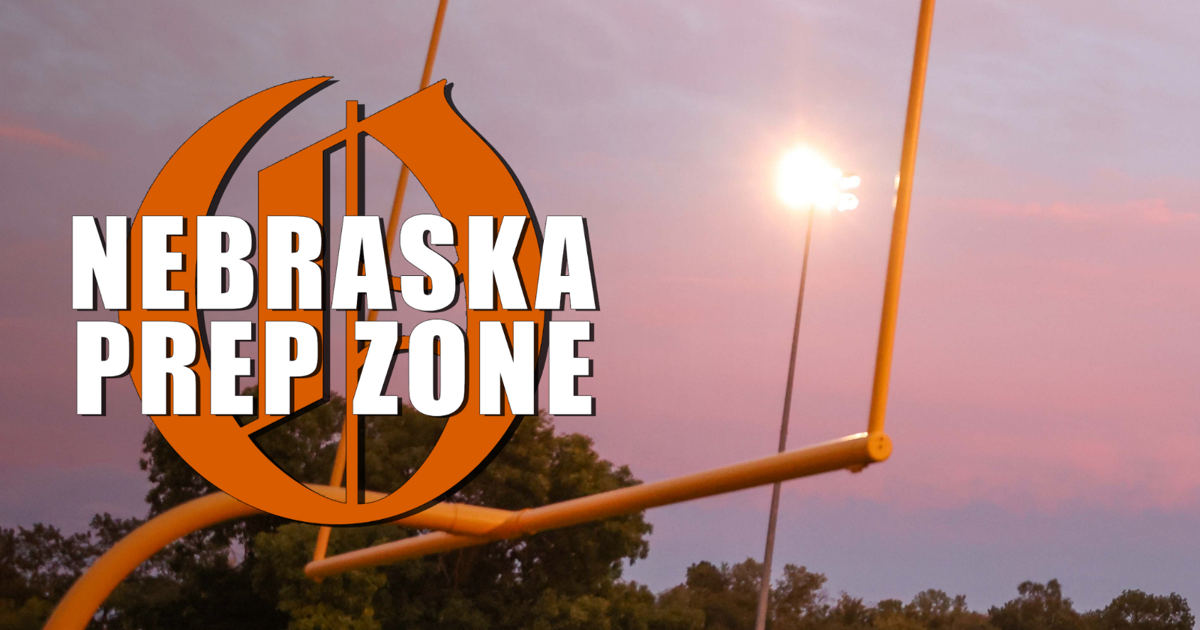
There are countless idyllic South Florida spots to watch the sun rise out of the Atlantic Ocean.
Mt. Trashmore is not one of them.
At least not from the bottom.
It is a 225-foot hill made out of a retired landfill, set just off the Florida Turnpike.
Not exactly a tourist destination.
At dawn in the late winter or early spring, however, there are at least a couple of regular visitors: Broncos safety Brandon Jones and New England wide receiver Mack Hollins.
They’ll be there, racing up the side of the former trash heap, pushing each other through interval workouts that would chase off all but the most hearty souls. And they will not be wearing shoes.
“He knows when we go to train, it’s not going to be fun, but it’s going to be worth it,” said Hollins, Jones’ teammate in Miami for two seasons and still an offseason training partner. “He’s one of the few guys in the league, I’d say, conditioning-wise, that can keep up with me.”
Even by NFL standards, Jones is a workout junkie, but he goes about it in unique ways that befit his unconventional manner.
He’s an outside-the-box thinker when it comes to training, preferring swimming, pilates and barefoot offseasons to throwing big weights around.
He’s most comfortable away from the limelight in a profession awash in look-at-me.
His job is to enforce the last line of defense with physicality and violence, but he’s “a very tender-hearted and sweet man,” says Broncos No. 3 quarterback Sam Ehlinger, a college roommate and close friend.
Jones led Denver in tackles in 2024, and has played all but a couple of snaps so far this year, but he is among the most understated and underappreciated members of a defense encrusted with A-listers like Zach Allen, Nik Bonitto and Pat Surtain II.
In that way and others, Jones has become on the field what those closest to him see away from it every day. He’s there when you need him. He gets the job done whether you notice it or not. He’ll clean up somebody else’s mistake and do it again without so much as a word.
At the heart of it all is a quiet but ever-burning quest to make proud the man he wishes he could have shared this ride with.
“Brandon has a big ‘why,’” Ehlinger said.
An early loss
Jones remembers trying to prepare for the impossible.
As a seventh-grader, he faced the prospect of losing his dad, Bert, to cancer.
“He was in hospice about the last two months of his life,” Jones told The Denver Post this week. “It was kind of an only-a-matter-of-time type of deal.”
Jones is one of five brothers, younger than Bryson and older than Brayden, Brennan and Braxton. They knew their mom, Sarah, was strong but also would need help.
“Me and my older brother, we kind of prepared and knew that we’d have to be in that father figure type of role for our younger brothers,” Jones said.
Bert Jones died Jan. 10, 2011, at just 43 years old. A former Stephen F. Austin football player, Bert told Brandon for years that Brandon had the kind of talent that could take him wherever he wanted to go in football.
“It definitely had a huge impact and I think, in a way, it’s what’s been motivating me up to this point,” Jones said.
Brandon starred at Nacogdoches High and became the top safety in the country in the 2016 recruiting class despite playing way out in the East Texas outpost. Jones played four years at Texas, met his wife, Brianna, there, and was drafted by Miami in the third round of the 2020 draft.
Along the way, he’s carried his dad’s No. 33 with him. In high school and college, he had the number embroidered on his towels.
That’s not allowed in the NFL, so Jones now has the number written on his cleats.
“It’s important to have that male role model in your life, whether here or passed, you can’t determine how much of an influence someone has on you based on how long they were in your life,” Hollins said. “Obviously, his father had a huge influence on him, and it’s great to see him shining on the field. I’m sure it makes him feel good — he may not ever admit it or say anything about it, but to know that your hard work and dedication to the game for somebody that you love is paying off, that’s really cool.”
‘Any way to get that edge’
When Jones took his cleats off after Denver’s Wild Card loss to Buffalo in January, he did so knowing he might not put a pair back on until April.
Jones, like Hollins and a growing group of players around the NFL, tries to do as much of his offseason training as possible barefoot.
He doesn’t wear shoes while doing drill work. Or around the house. Or while lifting weights.
“I’ve noticed that it’s a big stress reliever,” Jones said. “Especially first thing in the morning, being able to put your feet on grass. It also strengthened a lot of the muscles that you’re really not used to.
“From a change-of-direction standpoint, if you can get in and out of your cuts barefoot, when you put the cleats on, it’s going to be times 10.”
Hollins does nearly everything barefoot. Not just training or arriving for games, but also daily tasks like going to the grocery store.
“I like to compare a lot of things to what happens in nature,” Hollins said. “Being barefoot is kind of like a tree. You can be a big, tall tree, but if your root system isn’t good, a strong wind or, in our case, a hit or a cut happens, the rest of the system doesn’t do too well, and the whole thing falls down.”
Imagine wearing oven mitts over your hands most of the time for 30 years, Hollins posits. Would you take them off and expect to be able to use your fingers with fine-motor dexterity?
“Your wrists would be tight, your elbows would be tight, your shoulders would be tight,” he said. “People struggle thinking about the same concept with your lower body, but it’s the same thing.”
Jones still puts on shoes for date night and other occasions in the offseason, but he’s barefoot enough that he needs some time just before OTAs start to transition back into wearing shoes and then cleats.
“I slowly start putting shoes back on a couple days of the week,” he said. “It feels super different when you go without cleats and then you put them back on. You’re like holy (crap). These are heavy as hell.”
Jones has consistently had to look in unique places for potential advantages. He’s not the biggest safety in the NFL. Far from it.
He had a limited role early in his career in Miami and then tore an ACL Week 7 of the 2022 season.
But he also had a sense that if he could be in good enough shape to never tire, he’d build an edge that others at his position didn’t have.
“I’ve always been a borderline psychopath when it comes to working,” Jones said. “I always have to go-go. If I’m not, it just honestly feels weird now. I’ve been doing it since I was in the league. I see it as a way where it mimics the game, but in my head, I feel like it gives me an edge.
“And through my career, I’ve always looked for any way to get that edge.”
He found it first in running. And running and running and running.
“This guy just runs for fun,” new Broncos position-mate Talanoa Hufanga marveled after Denver’s Week 1 win against Tennessee.
Over time, though, Jones has also learned to try to combat what head coach Sean Payton says can turn into “over-training.”
That’s where the pool came into play.
Jones swims around 4 a.m. most days during camp. Now into the regular season, he’s in the pool Tuesdays and Fridays. And not just for a few minutes. He swims 15-20 laps — around a half mile — on Tuesdays and 10-15 on Fridays.
“Swimming allows me to do extra cardio and not have to worry about pulling a muscle or anything like that,” Jones said.
Dr. Dan Fine, a physical therapist in South Florida at Force Physical Therapy, has worked with Jones the past three years and calls his training volume “through the roof.” It’s not all that common for football players to buy into the notion of long-haul cardio work, given the nature of games, but Jones is a true believer. The theory, essentially, is that in most cardio-intensive sports, endurance is a strong baseline. It not only can power performance, but it also aids in recovery.
“He’s capitalized on taking advantage of that, whereas most football players might be like, my sport is six seconds on, 24 seconds off, so this is all I’m going to do,” Fine told The Post. “He looks at a more global approach and is willing to do (the work). …
“His ability to want to do outside-the-box things is pretty unique.”
‘He puts everything else first’
Outside the box is perhaps an ironic way to describe a football player who, during his years with the Dolphins, was seen as a player largely limited to playing in the box.
A blitzer. That’s how former Miami defensive coordinators Josh Boyer and Vic Fangio often used Jones. He had eight sacks his first three seasons and saw his playing time steadily rise. But coming off the 2022 ACL injury, he played just 46% of snaps in 2023 under Fangio.
The Broncos saw a potential every-down player when they signed him to a three-year, $20 million deal in the spring of 2024. He’s been exactly that.
“He was a really, really good tackler in the open field last year, and that’s one of the reasons we were so successful on defense,” secondary coach Jim Leonhard said. “If somebody made a mistake and the ball breaks, he got it on the ground, and you live to fight another down.”
Jones also showed he could cover, logging three interceptions along with a forced fumble and a fumble recovery. He checked in at No. 3 overall in Pro Football Focus’ safety rankings for the season.
“It’s not surprising at all,” Hollins said. “I saw it coming. It’s nobody’s fault because you don’t see everything, but a lot of times in the media, it’s like a guy has a real good season and it’s like, ‘Wow, he’s really turned it on.’ This is years and years of work.”
Jones learned the defense from coaches, but also P.J. Locke last offseason. The past few months, he’s been the teacher, helping Hufanga get up to speed.
It’s not just about the playbook, though. Hufanga is 25, playing in a new system for the first time, and has been limited by injuries frequently since his All-Pro season in 2022.
He’s trying, then, to fully absorb what makes Jones go.
They see a lot of themselves in each other. They’re not big talkers; they keep relatively tight circles, and they both feel like they can do it all.
“He’s been a brother since I got here,” Hufanga said earlier this month, going on at length about Jones and saying in part, “I’d love to give him his flowers because I don’t think a lot of people — nobody sees this stuff, right? He’s showing me what work ethic really looks like.”
Show. That’s the key word with Jones. He shows what’s important to him more than he says it.
He’s that way during family time, whenever he gets back to Texas to see his mom and brothers, who had never been on an airplane until they traveled to New Hampshire for Brandon’s wedding.
He’s that way in the film room. Same on the field. Same in honoring and carrying his dad with him on his cleats.
“He won’t volunteer much unless you have a thoughtful conversation with him,” his father-in-law, Chris Yotides, said.
“He puts everything else first. That’s the best way I can describe him.”



